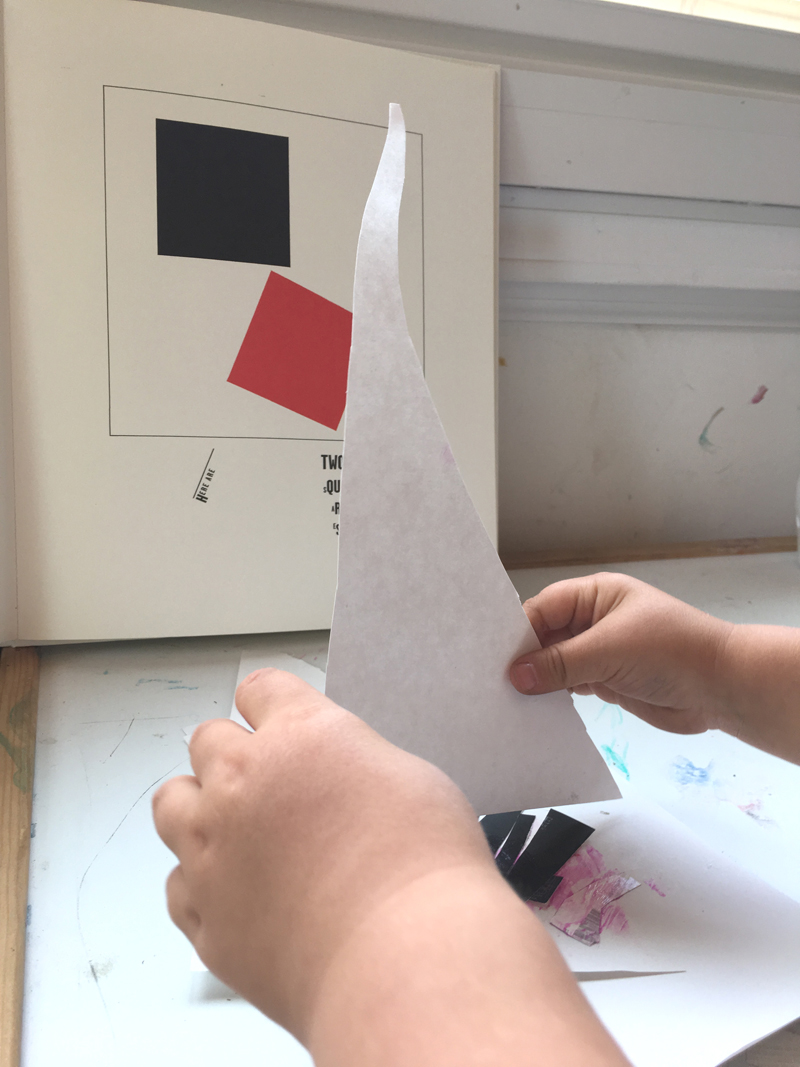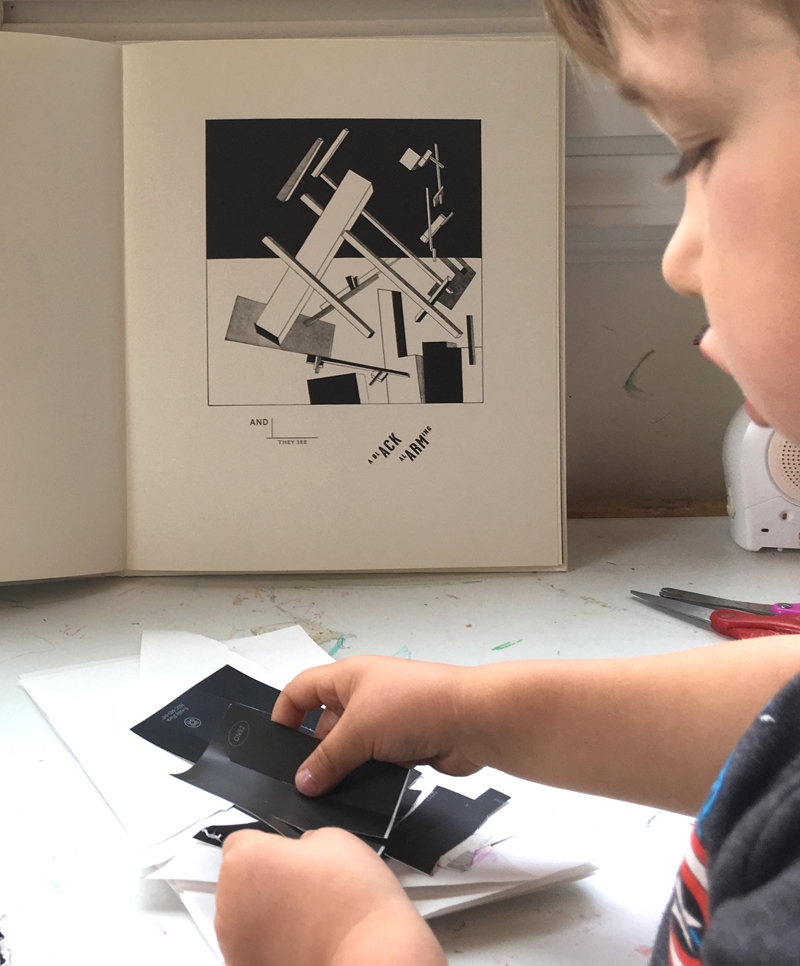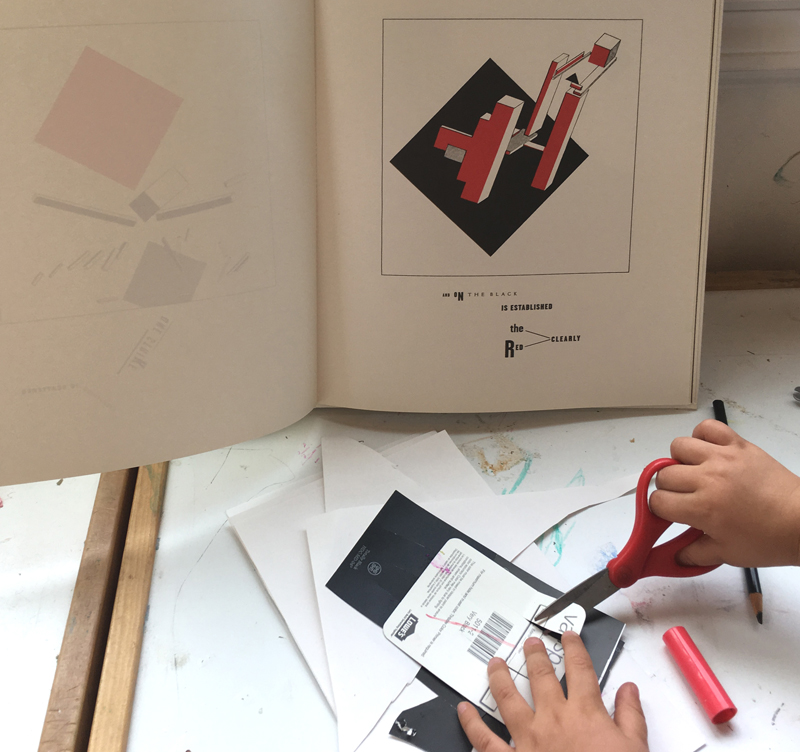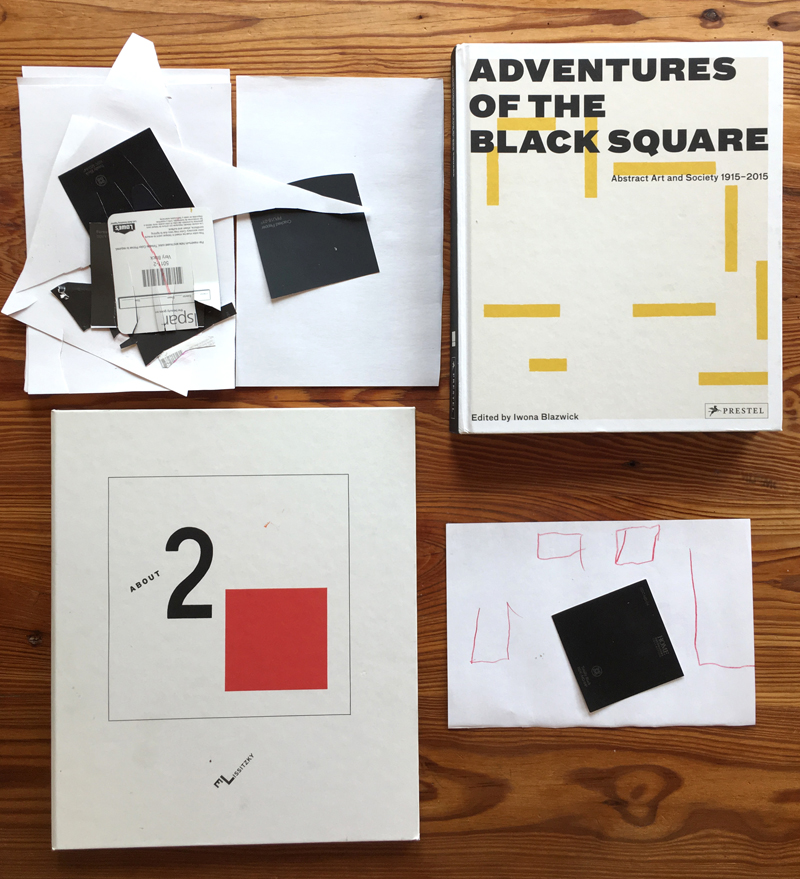
About Two Squares is a book for children by Russian artist El Lissitizky that was first published in a dense art journal called “De Stijl” in 1922. The book weaves together the rigor of Lissitizky’s studio art practice with the mode of a children’s picture book.
Different than most children’s books, you can read this book and not understand it. Firstly, it is abstract. Secondly, it is deeply embedded in the theories of art and social change from the 1920s. However, there is a story to follow. In short, it is about two squares coming to rebuild the world. Lissitizky genuinely believed that what we make and how we say it mattered. This motivated him to push the limits on how this is done. The point of the book is to see the revolution or to see yourself in it.
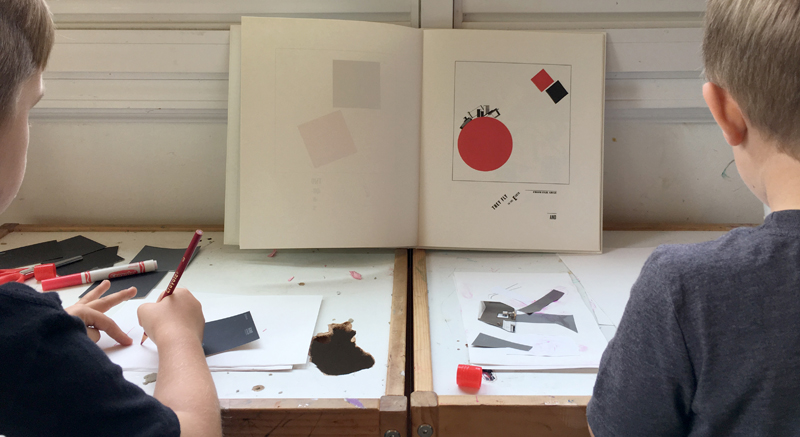
The book begins with instructions on how to read it. “Do not read. Take paper, columns, blocks…fold, colour, build.” We tried to do that. We read it a few times. Then I laid out the materials (a few black squares, a red crayon, and white paper). They practiced looking, making, and inventing their own adventure for a black square. I practiced watching them invent. One child glued each of his completed pages on top of the previous one until he ran out of supplies.
Lissitizky saw the social changes happening in Russia and believed his new world needed a new visual language. Likewise, I want my children to practice making something totally new. Learning to play with experimental ideas (or forms) is learning to be part of social change. And for me, learning to play is learning how to make something totally new.
You can read more about the history of About Two Squares from Charnel House and from Lissitizky’s entry on MoMa. Buy your own copy here. Or if you are local, come borrow it from our bookshelf.
